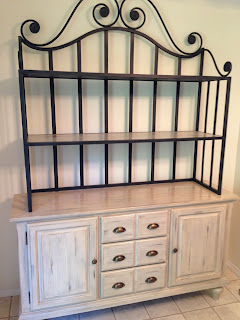You will need an old book you can rip the pages out of, scissors, and a cool glue gun with lots of glue sticks. Not kidding here: Don't try this with your super hot glue gun. You will not have any skin left.
Now fold one corner of your page down to meet the opposite edge, like above. We're going to cut it into squares.
Cut the excess off, as above.
<<You will end up with the square to the left.
Trim the corners - you do not have to be precise. >>
Now cut a spiral into the circle, leaving a tiny disk shape in the middle (photo on the right). Again, do not be precise. Irregular shapes and widths make the roses look unique.
Starting from the outside, start curling the paper. Start with a tight curl to start it off.
Keep winding...
As you wind towards the middle, you can decide whether you like it tighter or looser. Keep winding...
This is what it looks like from the side. Keep winding until you get to the little disk-shaped end.
This is what it looks like from the bottom after it's all wound up. See the little disk shape flipped up at the top? Now squirt a blob of glue right into the center. This will hold all of those layers together...
And then close the disk flap down onto the glue to hold everything in place.
 <<You may end up with something like this. I personally didn't like the piece that was sticking out, so I always go around and dab glue into the very bottom of the outside petals to secure them and to place them where I like. Finished product >>
<<You may end up with something like this. I personally didn't like the piece that was sticking out, so I always go around and dab glue into the very bottom of the outside petals to secure them and to place them where I like. Finished product >>
Experiment with using different sizes of pages, which give you a bigger variety of rose sizes and shapes.
Now you're going to glue them to the wreath. Since I didn't want green to show through between the roses, I wanted to spray paint the wreath white. Unfortunately, I ran out of white spray paint because of the porousness of the foam. I figured knocking the green down to light green was good enough and moved on. :-)
For finishing my wreath, I have my sorta painted wreath, finished roses in three sizes, and my Dangerous Killer Take Your Skin Off glue gun. I decided to use this glue gun for this part as I need the roses to adhere stronger than a cool glue gun can plus my skin doesn't come in contact with the glue (in theory).
Now just go for it. I just started using the biggest and prettiest ones on top where people will see them most, filled in the outside and inside, and used my tiny baby roses from really small books to fill in. Photos below.
All done!
You could tea stain the top edges of your roses, too. Add a bow. Add a wooden letter. Or give me another idea! I'm sure this won't be the last one I make. The front door might need a colored one with the wooden numbers of our house number. Hmmmm....

.jpg)









































